|
|
|
|
|
BRIEF HISTORY OF THE MANTA SHAPE - Page 1 Compiled 2005 - 2006 |
NAVIGATION
|

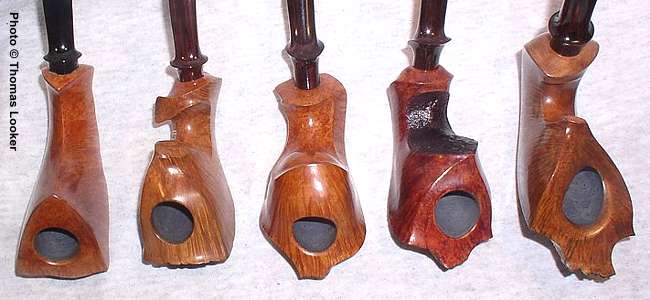


"Floppy Horn" (2005)

|
The "Floppy Horn," SPC 316 is a pipe that I believe would have been a snail grade but for a small flaw, covered by the inlay. This pipe dates from the summer of 2004, when Tokutomi was in the process of redefining his grading system. Tokutomi-san here begins adding extraordinary flexibility to the front of horn shape. (Note: The flexibility of this horn contains the seeds for Toku's future Manta development.) |

|
The creative distance Toku has traveled in a short time is clearly visible if we compare his latest horn with the one of the small horns he produced, about a year ago (SPC 124). Note particularly changes in how he handles the bottom ridge and the contours of the horn-sides. Similarities in form abound between the pipes, as does Toku's overall aesthetic, but the way Toku constantly stretches himself becomes tangible in how he is able to re-imagine pliability of shape and fluidity of line in his briar carvings. |
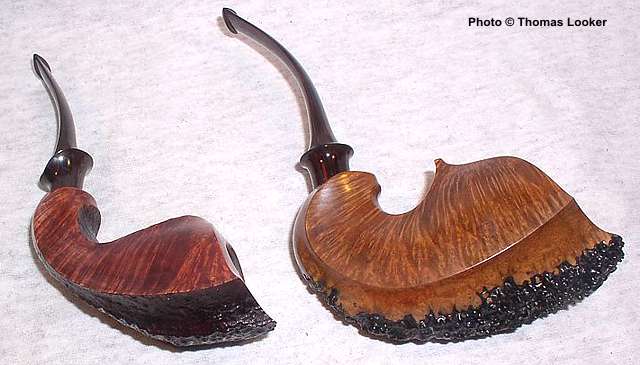
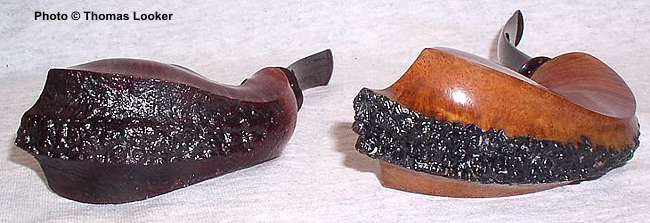
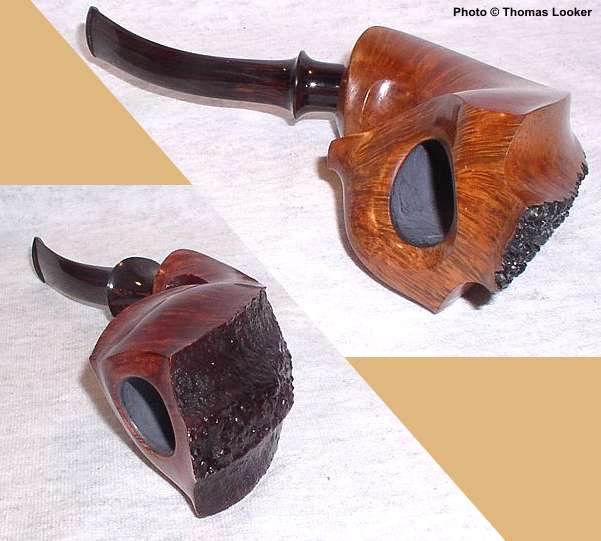
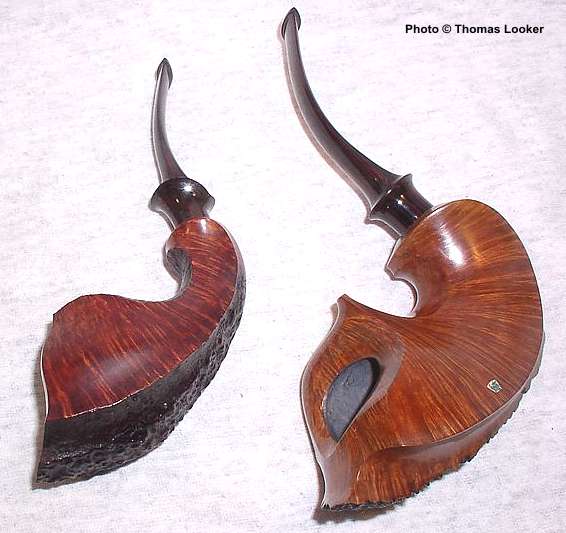
|
BIGGER HORNS WITH INCREASING FLEXIBILITY The beginning of 2005 saw Tokutomi using a thick ivory ferrule on a whimsical red horn (SPC 338) that partly looks backwards to earlier Delta-like designs; but the elongation and smoothing-out of the "tongue" along the bottom of the pipe also prefigures a central feature of the Manta shape. |
SPC 316 (late 2004) and SPC 338 (early 2005)

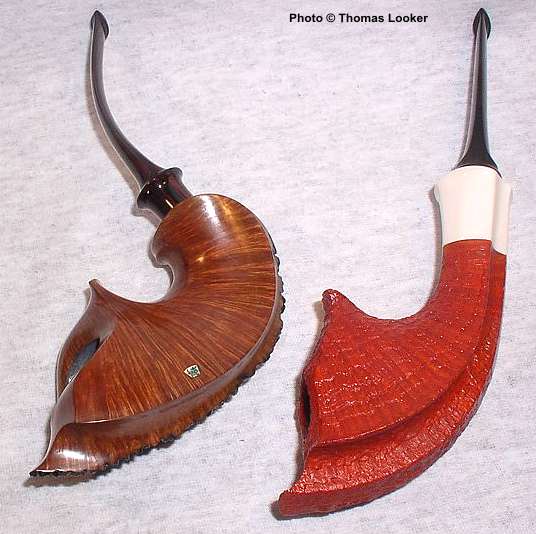
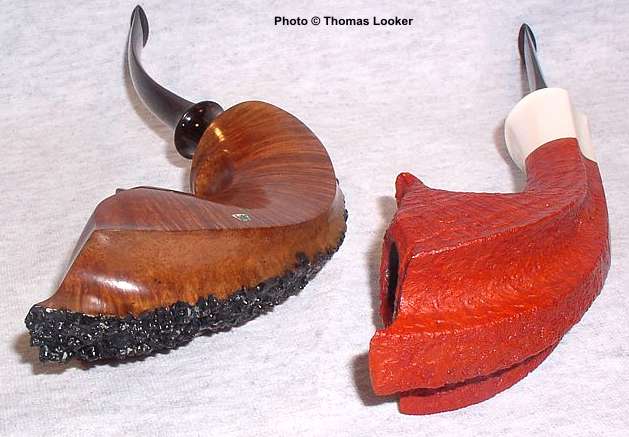
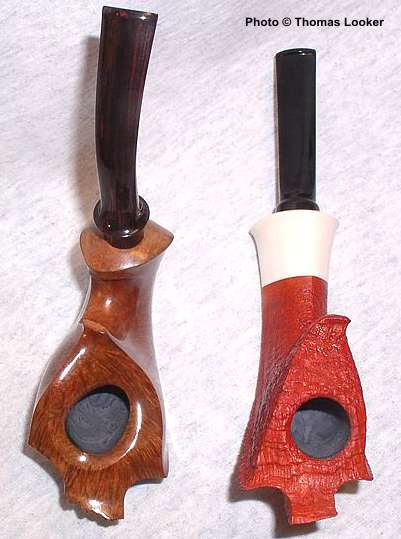
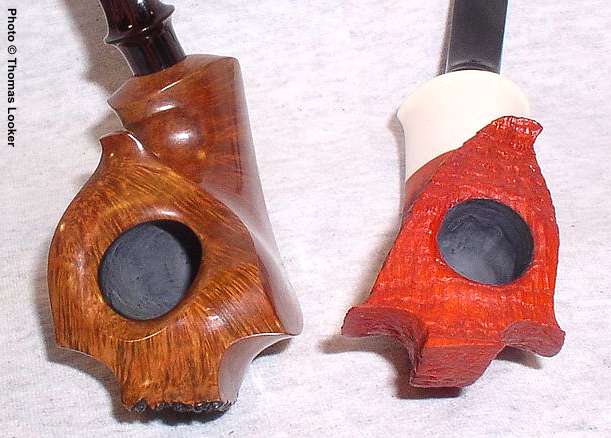
NAVIGATION
END OF
BRIEF HISTORY OF THE MANTA SHAPE - 1